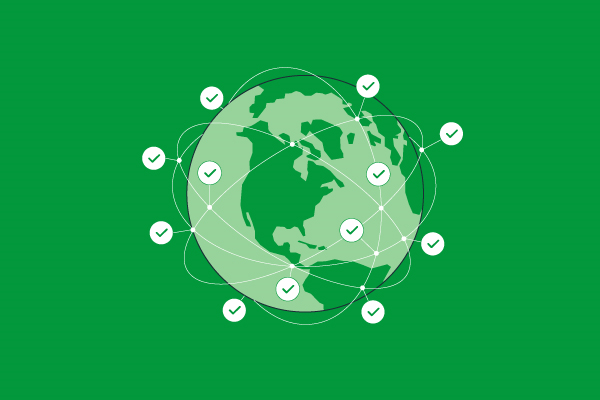With the rapid advancement of cross-border ecommerce across the globe and the ever-increasing number of merchants jumping on the online bandwagon, DTC has become the preferred operating model to power the cross-border online business. Seamlessly and effectively supported by the SaaS service platform, the DTC model is the merchant’s ideal choice for a site that is highly compatible with their inherent business operations, expediting the speed of their expansion worldwide.


Cross-border Ecommerce Powered by SaaS
According to a report, the market value of SaaS-based cross-border ecommerce is expected to increase from USD1 million in 2022 to USD10 million by 2029.1
This rapid growth trend is attributed to two key factors:
1. The disparity between the dynamics of consumers in global markets has compelled cross-border merchants to consult with professional service providers. Spurred by the advent of the internet, consumers have switched from the brick-and-mortar shops to the convenience of contactless shopping, driving more merchants to expand their business across international borders. However, due to cultural, geographical and lifestyle differences and consumer habits, domestic brands may find it challenging to break into the global markets. Supported by SaaS, merchants can establish their global operational infrastructure effectively within a minimum timeframe and leverage it to engage the local consumers, thereby expanding their footprint worldwide.
2. Demand for SaaS has been driven by the explosive growth of the DTC model. Compared to a platform-based model, SaaS offers effective and efficient approaches to brand marketing, positioning, and full access to customer data and spending habits. To get ahead of the ever-increasing competition in the cross-border online marketplace, adopting the SaaS approach to reach out directly to the customer would free the merchant from the constraints of retail websites / stores. With full control, the merchant would be able to cost-effectively drive their own branding, channels, and personalization, going to market quickly and giving the customer the ultimate shopping experience.
SaaS Continues to Accelerate Cross-border Ecommerce
Although the SaaS application needs are initially set by the merchant, factors pertaining to actual product usage and the consumer themselves are key to ensuring that the DTC service offered is focused on the end customer and the merchant’s operational needs.
Driving Sustainable Brand Loyalty
Branding not only increases the consumer’s trust in the product but also lays the foundation for market expansion because consumers generally prefer buying from a site developed and managed by the brand owner. An owner managed site not only drives sustainable brand loyalty but also facilitates secondary and cross-marketing. Also, direct feedback from the consumer will facilitate continuous improvement, thereby increasing the competitiveness of the brand in the marketplace.
Full access to reliable, secure, value-added data
By adopting SaaS, the merchant has full access to the relevant consumer data, not only allowing them to safeguard the consumer’s data but also enabling them to gain deep insight into the consumer’s spending habits and preferences, and deep—dive into pertinent operational data.
The end-to-end process of DTC comprises the key elements of site establishment, product curation, sales and marketing, payment and logistics, all seamlessly connected to ensure a smooth operational flow. The payment segment, in particular, requires special attention since the transactions involve transit across international borders with differing rules and regulations which are to be complied with. Merchants are frequently challenged to meet the local payment needs of consumers in the respective countries.
On the other hand, the merchant also has specific payment processing needs that must be addressed. To that end, the merchant needs a customized payment process that is secure, easy to use and offers the consumer a pleasant payment experience.


Through long-term collaboration with global mainstream SaaS providers, Oceanpayment has established a center of excellence with development resources and capabilities in customization. With more than 10 types of open-source marketplaces and over 30 SaaS platforms, we are positioned and ready to support rapid site development and test facilities. To meet the diverse needs of our customers, we will apply technology innovatively to customize the respective payment interfaces with API (SDK) connectivity, addressing the need to seamlessly and effectively that manage essential transactions like refund requests, chargebacks, logistics, and account reconciliation.


Just as a SaaS platform can only be deemed successful when the respective merchant’s business is thriving, the payment processor is no different. Oceanpayment aims to leverage our in-depth experience and innovative technological capabilities in cross-border digital payment services to support merchants in successfully expanding their footprint in the global marketplace.
Reference:
1. Global E-commerce SaaS Market [2023-2030] research report






Comments are closed.